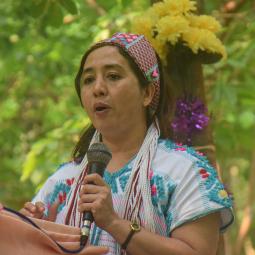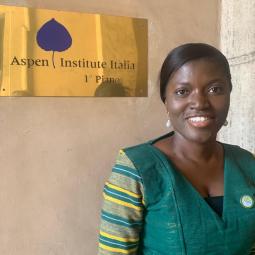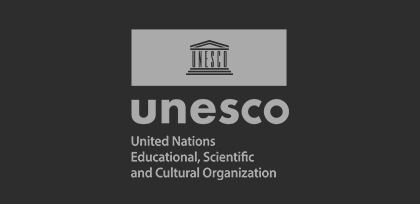OWSD Nigeria National Chapter presents Climate change and mental health: understanding the psychological impacts of a warming world
November 19, 2024
OWSD Nigeria University of Port Harcourt Branch Series of Scientific Communications: Briggs, Elizabeth on Climate Change and Mental Health
Climate change and mental health: understanding the psychological impacts of a warming world.
By
Briggs, Elizabeth
OWSD, UNIPORT CHAPTER
-
Introduction
According to the United Nations Framework Convention on Climate Change (UNFCCC), climate change is defined as "a change of climate that is in addition to natural climate variability observed over comparable time periods and which is attributed directly or indirectly to human activity that alters the composition of the global atmosphere." Tianyi et al. (2022) define climate change as the increased frequency and severity of extreme weather events and climate-related natural disasters (such as floods and wildfires), as well as more gradual changes to the climate and environment, such as rising sea levels and temperatures. The term "climate change" refers to the rise in the average global temperature that results from both natural and man-made processes, including burning, farming, mining, deforestation, and other activities that have the potential to affect the earth's atmospheric composition and cause global warming. As a result of climate change brought on by human activity, extreme heat waves are now more common, intense, and long-lasting, directly endangering human life and well-being. Qi et al. (2022) noted that Global warming is likely to cause widespread emergencies in the future. These events include extreme heat (increased global mean surface temperature, heat waves); climate change–related water disasters (CCRWDs) (sea level—flooding, hurricanes, and coastal storms); droughts; wildfires; winter storms, extreme snow, and severe CAPE (convective available potential energy) thunderstorms (supercells, derechos, and tornados) (NASA, 2019; Church et al., 2019). The World Health Organization has referred to climate change as "the single biggest health threat facing humanity (World Health Organization, 2023).
-
Understanding mental health and climate change crisis
Mental health refers to a person's emotional, psychological, behavioral, and social well-being. It dictates how individuals manage everyday stress and contribute to their communities (Chioma et al., 2021). Mental Health does not just refer to mental illness, mental problems and mental disorders alone but also includes states of mental wellness, emotional resilience, and psycho-social wellbeing. Global reports on climate change and health are beginning to acknowledge the indirect health implications of the phenomenon. These include illnesses associated with food and water safety, undernutrition brought on by food insecurity, malignant melanoma from UV exposure, and chronic kidney disease from dehydration (Emma et al., 2022). Direct exposure pathways include being exposed to prolonged climate change events, such droughts, as well as first-hand encounter with events like floods, storms, heat waves, and wildfires. Heat waves occurs as unusually high temperatures lasting some days that range outside the normal temperature for a specific season. The frequency and intensity of heat waves are considered extreme events linked to climate change, with a regional effect. Physical health, mental health, human well-being, and heat waves seem to be specifically interconnected. Mood disorders, anxiety, and other related consequences have been linked to heat stress which is directly caused by heat waves. Studies show that direct exposure to climate change events could lead to several mental health conditions such as post-traumatic stress disorder (PTSD), depression, anxiety, reduced subjective wellbeing, as well as increased suicide (Chan et al., 2018; Cianconi et al., 2020). Indirect exposure pathways involve perceiving, observing, and thinking about climate change without experiencing climate change events in person. Observing climate change may occur through viewing climate-change-related media content or from a person noticing climate change-related changes in their physical and social environments e.g. noticing biodiversity loss or environmental degradation. Several research suggests that indirect exposures can trigger strong negative emotions such as depression, guilt, sadness, anger, fear, anxiety, and hopelessness, and even lead to mental disorders (Clayton, 2020). Various inter-relating terms and concepts have been used to describe the feelings of concern, anxiety or loss associated with these indirect exposures to climate change. For example, ‘climate anxiety’ refers to anxiety associated with perceptions about climate change, "eco-anxiety" describes the challenging feelings and mental states that someone experiences as a result of knowing about environmental problems, ‘solastalgia’ refers to the distress caused by observing changes to an environment that one is connected with and when someone experiences or anticipates an ecological loss, they are said to be experiencing "ecological grief" (Cunsolo and Ellis, 2018; Pihkala, 2018).
Figure 1: Impacts of climate change on mental health
-
Vulnerable populations affected by climate change.
Climate change has had a disproportionate impact on the well-being of vulnerable and disadvantaged groups and communities, such as pregnant women, the elderly, the poor, disabled populations, and Black and Indigenous people. (Gaskin et al. 2017; IPBES, 2019; Kosanic et al. 2022). Admittedly, Ronoh et al., (2015) argue that significant numbers of children with disabilities across the globe – estimated to be seven million – are susceptible and vulnerable to natural hazards and affected by disasters.
a. Pregnant Women and children
Children are vulnerable to adverse health impacts associated with environmental exposures due to factors related to their immature physiology and metabolism, their unique exposure pathways, their biological sensitivities, and limits to their adaptive capacity. Children are more vulnerable than adults to severe weather conditions, droughts, and floods. They are unable to control their level of exposure in the same way adults can and are less able to survive the impacts of these events. In a flood or storm, children are incapable to physically protect themselves from immediate dangers. In a drought or in areas of high-water scarcity, they are less able to secure access to clean water and food. Additionally, children are less able to control their body temperature during heatwaves and are more sensitive to temperature changes than adults (UNEP and UNDPPA, 2020). They are also more susceptible to diseases that will proliferate with climate change, such as malaria and dengue than adults. Children under the age of five bear nearly 90 per cent of the global burden of disease associated with climate change (Bethuel, 2023). They are also highly susceptible to waterborne diseases and pathogens that emerge because of floods and contamination of water supplies. Every year 525,000 children die from diarrhea, often caused by contaminated water. Exposure to climate change may result in unfavorable pregnancy and neonatal health outcomes, such as low birth weight (less than 5.5 pounds), preterm birth (birth before 37 weeks of pregnancy), spontaneous abortion, an increased risk of neonatal death, dehydration and its accompanying renal failure, malnourishment, diarrhea, and respiratory disorders. Other risk factors that could affect the health of expectant mothers and newborns health include a lack of access to water, poverty, and population displacement. During pregnancy, especially in the second and third trimester, exposure to heat waves has been shown to be related to a lower average birth weight and increase of incidence of preterm birth. In addition to behavioral issues and lowered IQ, effects during childhood and adulthood comprised reduced schooling and economic activity (APA, 2017; Padhy et al., 2015). The rate of preterm births is relatively high in the United States (1 of every 9 infants born), where they contribute substantially to neonatal death and illness (Desai and Mandal 2021).
-
Persons with disabilities
A disability is any physical or mental condition that prevents an individual from engaging in certain activities or from participating in daily activities like going to school, working, or having fun. The term “disability” covers a vast array of functional limitations related to expressive and receptive communication (hearing and speech), vision, cognition, and mobility. Disability is a condition that affects people of all ages and is not evenly distributed among populations. Disabilities differ according to gender, race, ethnicity, and geographic location. People with disabilities experience disproportionately higher rates of social risk factors, such as poverty and lower educational attainment, that contribute to poorer health outcomes during extreme events or climate-related emergencies (Astle et al., 2023). Planning and emergency response are interfered with by these factors, which also increase the hazards associated with functional limitations. People with disabilities face several health concerns associated to climate change, the most basic of which may be their "invisibility" to planners and decision-makers. Research on the actual experiences of individuals with disabilities during or following extreme events is rather few. In 2005, Hurricane Katrina had a significant and disproportionate effect on people with disabilities. 103 people in nursing homes, most likely with disabilities, were among the 986 people in Louisiana who died as a direct result of the storm. When it comes to those who are blind or have low vision, deaf or have hearing loss, or have impaired cognitive abilities, risk communication is not always created or presented in an accessible manner or media. People with disabilities might not be able to receive emergency communications or other crucial alerts, such as a warning to boil contaminated water. In addition, persons with disabilities often depend on medical equipment (such as portable oxygen) that requires an uninterrupted source of electricity. Portable oxygen supplies must be evacuated with the patient (Kosanic et al., 2022).
-
Older adults
Older adults (generally defined as persons aged 65 and older) are vulnerable to the health impacts associated with climate change and weather extremes (Malak et al., 2020). Populations of older adults may be more exposed to infections due to anticipated changes in the distribution of disease vectors like ticks and mosquitoes brought on by climate change. It is also anticipated that sources of drinking and recreational water would be more vulnerable to exposure to waterborne diseases due to climate change. Elderly people are more likely to die or experience serious health consequences from gastrointestinal disorders brought on by contaminated drinking water.
-
Persons with Chronic Medical Conditions
It has been demonstrated that individuals with a variety of medical illnesses are more likely to die or have their diseases worsen when exposed to excessive heat. Those with diabetes, cardiovascular disease, respiratory disorders, and mental illnesses had an increase in hospital admissions and emergency response visits during heat waves. People with mental health disorders or medical problems such as Alzheimer's disease may be more vulnerable in times of crisis since these ailments might affect judgment and behavioral reactions (Bethuel, 2023).
-
Call to action.
- Information and awareness: Access to specific weather information, early warning and forecast technologies can help farmers to develop and readjust coping or adaptation strategies. Farmers should be educated to cultivate away from flood prone areas to reduce the impacts of flooding in the farms.
- Tree planting/reforestation: More than 70 percent of the people living in rural areas in Nigeria use fuel wood, which has been a key contributor to deforestation. However, reforestation is only about 10 percent of the deforestation rate. There is an urgent need for a more aggressive tree planting.
- Insurance and other financial tools: Insurance can be an effective adaptation strategy, with the potential to reduce the impact of climate change on insurance policy holders The Nigerian government should support private insurance firms through policies that would encourage public-private partnerships, to encourage firms to be more willing to provide insurance to agricultural businesses for climate-related affects.
- Renewable Energy: For Nigeria to provide energy for its entire population while limiting greenhouse gas emissions, all forms of renewable energies need to be exploited. These include solar power, tidal, ocean energy, geothermal power, and wind power, nuclear power, the use of carbon sinks, and carbon capture and storage.
-
Conclusion
More people are realizing that mental health is seriously threatened by climate change, which has both direct and indirect effects. Vulnerable groups, such as children, pregnant women, older adults, people with disabilities, and those with chronic diseases, are widely affected by extreme weather events, global warming, rising temperatures, and environmental degradation. Climate-related health effects, including heat stress, waterborne illnesses, and mental health disorders, are more likely to affect certain groups of people. Conditions like eco-anxiety and solastalgia are brought on by indirect exposure to climate change through the media and environmental changes. To mitigate these impacts, adequate measures at social, behavioral, and physical levels are necessary. These include enhancing public health systems, improving living conditions, and increasing green spaces to create a more resilient and supportive environment for mental health in the face of climate change. In conclusion, there are serious health hazards associated with climate change that might impact one's physical and mental health. To reduce hazards and increase resilience to climate change, addressing these issues calls for a combination of social, public health, and physical solutions, including financial support, modifications to urban planning, and enhanced infrastructure.
References
APA, (2017). Mental Health and Our Changing Climate: Impacts, Implications, and Guidance. Washington, DC
Astle, B., Buyco, M, Ero I., & Reimer-Kirkham, S. (2023) Global impact of climate change on persons with albinism: a human rights issue. Journal of Climate Change and Health 9;100190
Bethuel S. N. (2023). Climate change effects on vulnerable populations in the Global South: a systematic review. Natural Hazards, 118:977–991
Chioma A., Benjamin A., Beatrice O. E., Victor O., & Emma A. N. (2021). The Impacts of Climate Change on Mental Health: Adaptation Strategies for Sustainability in Africa. Emergency Medicine and Critical Care, 5.6: 67-74
Church J. A., Clark P. U., Cazenave A., Gregory J. M., Jevrejeva S., & Levermann A. (2013): Sea Level Change. In: Climate Change 2013: The Physical Science Basis. Contribution of Working Group I to the Fifth Assessment Report of the Intergovernmental Panel on Climate Change. Cambridge, United Kingdom and New York, NY, USA: Cambridge University Press
Clayton, S. (2020). Climate anxiety: psychological responses to climate change. Journal of Anxiety Disorders. 74
Cunsolo, A., & Ellis, N. R. (2018). Ecological grief as a mental health response to climate change-related loss. National Climate Change, 8 (4), 275–281.
Cianconi, P., Betro, ` S., & Janiri, L. (2020). The impact of climate change on mental health: a systematic descriptive review [Systematic Review]. Frontiers of Psychiatric. 11 (74)
Emma, L. L., Rhiannon, T., Jessica, N. L., Lisa P., & Neil, J. (2022) The Impact of Climate Change on Mental Health and Emotional Wellbeing: A Narrative Review of Current Evidence, and its Implications, International Review of Psychiatry, 34:5, 443-498
Gaskin C. J., Taylor, D., Kinnear, S., Mann, J., Hillman, W., & Moran, M. (2017) Factors associated with the climate change vulnerability and the adaptive capacity of people with disability: a systematic review. Weather Climatic Society, 9(4):801–814
Kosanic, A., Petzold, J., Martín-López, B., & Razanajatovo, M. (2022) An inclusive future: disabled populations in the context of climate and environmental change. Current Opinion in Environmental Sustainability, 55:101159
IPBES. (2019). Summary for policymakers of the Global assessment report on biodiversity and ecosystem services of the intergovernmental science-policy platform on biodiversity and ecosystem services. IPBES secretariat
Malak, M. A., Sajib, A. M., Quader, M. A., & Anjum, H. (2020) We are feeling older than our age”: vulnerability and adaptive strategies of aging people to cyclones in coastal Bangladesh. International Journal of Disaster Risk Reduction, 48:101595
NASA Global climate change. (2019). Severe thunderstorms and climate change.
Padhy, S. K., Sarkar, S., Panigrahi, M., & Paul, S. (2015). Mental health effects of climate change. Indian Journal of Occupational Environmental Medicine, 19:3–7.
Pihkala, P. (2018). Eco-anxiety, tragedy, and hope: psychological and spiritual dimensions of climate change. Zygon 53 (2), 545–569
Qi Z., Pei Y., Rahini M., Wenzhong H., Yuan G., Zhengyu Y., Tingting Y., Bo W., Yao W., Shanshan L., & Yuming G. (2022). Global climate change and human health: Pathways and possible solutions. Eco-Environment & Health 1: 53–62
Ronoh, S., Gaillard, J. C., & Marlowe, J. (2015) Children with disabilities and disaster preparedness: a case study of Christchurch. Kōtuitui N Z. Journal of Social Science Online 10(2):91–102
Tianyi, M., Jane, M., & Anne C. (2022). Climate change impacts on the mental health and wellbeing of young people: A scoping review of risk and protective factors, Social Science & Medicine 301 (2022) 114888
UNEP UN Women, UNDP & UNDPPA (2020). Gender, climate, and security: Sustaining inclusive peace on the frontlines of climate change.
World Health Organization (WHO) (2017). Mental health
World Health Organization. (2023). Climate change and noncommunicable diseases: Connections. https://www.who.int/news/ item/02–11-2023-climate-change-andnoncommunicable-diseases-connections
Xu, Z., R. A. Etzel, H. Su, C. Huang, Y. Guo, & S. Tong, 2012: Impact of ambient temperature on children's health: A systematic review. Environmental Research, 117, 120-131











































